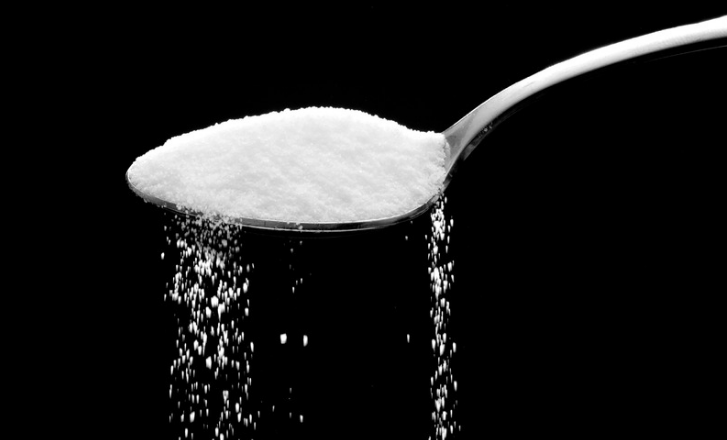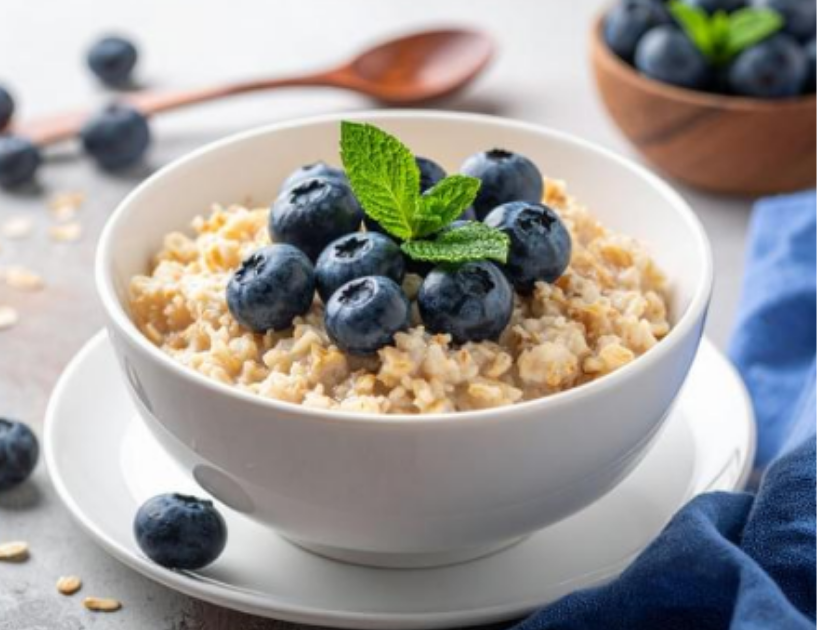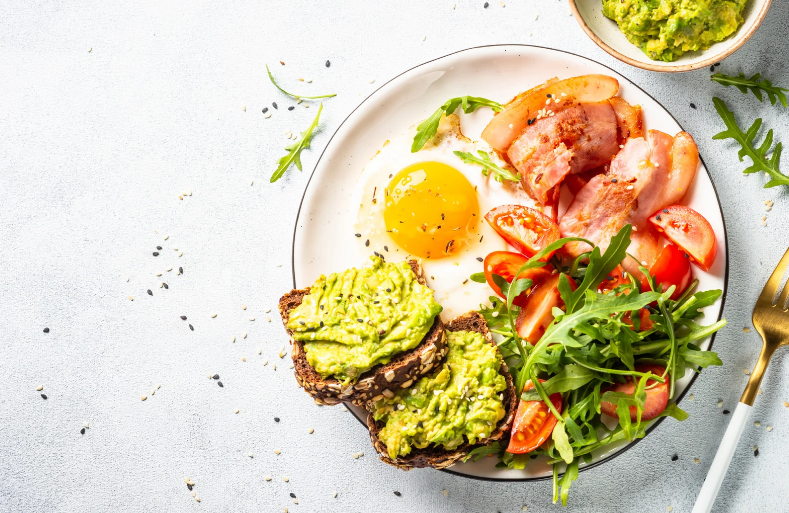
For many people trying to lose weight, the focus is on what not to eat. They dissect nutrition labels and carefully track their food, intent on avoiding or limiting those common culprits: fat, calories, sodium and sugars. With all that attention on what to subtract, though, it's easy to lose sight of what should be added—like vitamins and minerals.
Often referred to as micronutrients, vitamins and minerals are needed in small quantities as compared to the macronutrients (carbohydrates, protein and fat), notes registered dietitian Becky Hand—but that doesn't mean they're not essential. "Even though vitamins and minerals are needed only in small amounts, it is a little mind-boggling to think about all their jobs to keep the body running in tip-top shape," Hand points out.
What Is a Nutrient Deficiency?
Vitamins and minerals are not produced naturally in the body, which means it's up to us to replenish them, ideally through the foods we eat. The Dietary Guidelines for Americans 2015-2020 recommends that you meet your nutrient needs by using a health-promoting eating plan.
"The best way to avoid or correct a nutrient inadequacy is to make sure you are using a nutrient-rich eating plan, such as Choose My Plate, the Mediterranean Diet or the DASH Diet," Hand recommends.
However, certain medical conditions, unhealthy behaviors and eating plans may bring about the need to use a specific nutrient supplement or a multivitamin-mineral supplement, Hand points out.
A deficiency in a particular vitamin or mineral could have detrimental effects over time. When it comes to not getting enough nutrients, Hand says there are two levels. The milder case, a "nutritional inadequacy," may occur from a low intake of a nutrient. This could be due to food choices, food availability, increased requirements for an individual during a particular stage of life, or altered digestion or absorption. It's easy to overlook this stage, Hand notes, as the person generally doesn't experience any symptoms. But if the lack of nutrients continues or becomes more severe, the person may develop a "nutritional deficiency," which can become serious or even dangerous over time.
According to data from the National Health and Nutrition Examination Survey and the Second Nutritional Report on Biochemical Indicators of Diet and Nutrition, less than 10 percent of the U.S.
Calcium
Calcium gets a lot of props for keeping bones and teeth strong, but it also helps maintain basic bodily functions that are essential to survival, like
"If you don’t get enough calcium over a long time period, excessive bone loss can occur and increase the risk for bone fractures," she says. "Not getting enough calcium may also raise blood pressure levels." Some groups have a higher risk of calcium deficiency, including post-menopausal women, people with lactose intolerance, and vegetarians and vegans who do not consume dairy foods.
Daily Recommended Calcium Intake
- Adults, 19-50 years: 1,000 mg (milligrams)
- Adult men, 51-70 years: 1,000 mg
- Adult women, 51-70 years: 1,200 mg
- Adults, 71 years and older: 1,200 mg
- Pregnant and breastfeeding adult women: 1,000 mg
Food Sources
- Yogurt, nonfat, plain, 1 cup: 414 mg
- Milk, nonfat, 1 cup: 300 mg
- Calcium-fortified soy beverage, 1 cup: 299 mg
- Calcium-fortified orange juice, 6 ounces: 375 mg
- Tofu, firm, made with calcium sulfate, 4 ounces: 138 mg
- Mozzarella cheese, 1 ounce: 222 mg
- Salmon, canned with bones, 3 ounces: 181 mg
- Broccoli, raw, 1 cup: 21 mg
Vitamin C
The vitamin that seems to grab all the headlines, vitamin C helps protect your cells from the damage of free radicals. It is involved in processes that heal cuts and wounds, produces collagen (which holds tissues together), and forms and repairs cells in the body. It also helps the body absorb iron from plant foods and helps keep the immune system healthy.
"If you don’t get enough, eventually you may experience a severe vitamin C deficiency called scurvy, which leads to excess bleeding, swollen gums and loose teeth," Hand explains. "Also, wounds may not heal properly." While commonly associated with malnutrition and, strangely, pirates, scurvy is rare in the United States but is fatal if it goes untreated.
Those most at risk for vitamin C concerns are people who smoke and those who are exposed to secondhand smoke. More vitamin C is needed to repair all the cells in the body that are damaged by the smoke, Hand notes.
Recommended Daily Vitamin C Intake
- Adult men: 90 mg
- Adult women: 75 mg
- Pregnant women: 85 mg
- Breastfeeding women: 120 mg
Note: If you smoke or are exposed to secondhand smoke, add 35 milligrams to the values listed above to determine your true total daily need.
Food Sources for Vitamin C
Most vitamin C comes from plant foods. Good sources include citrus fruits, like oranges, grapefruit and tangerines. Other sources include berries, melons, peppers, dark leafy greens, potatoes and tomatoes.
- Orange, 1 medium: 70 mg
- Grapefruit juice, 1 cup: 94 mg
- Green bell pepper, ½ cup: 60 mg
- Broccoli,
cooked ½ cup: 31 mg - Strawberries, ½ cup: 45 mg
- Cantaloupe, ½ cup: 29 mg
- Tomato, 1 medium: 25 mg
- Baked potato, 1 medium: 17 mg
Vitamin D
Known as the "sunshine vitamin," because the body can produce it after sunlight hits the skin, vitamin D is a nutrient needed to maintain strong bones. However, it is important to limit exposure in order to lower the risk of skin cancer. When out in the sun for more than a few minutes, be sure to wear protective clothing and apply sunscreen with an SPF of eight or higher.
The skin of older adults may not make as much vitamin D when exposed to sunlight, and the kidneys may be less able to convert it to its active form. As such, older adults are at a higher risk. People with darker skin tones may also be less able to produce vitamin D from the sun, and because body fat binds to some vitamin D, obese people may be at a higher risk of deficiency.
Vitamin D promotes the absorption of calcium by depositing it in the bones and teeth, making them strong and healthy. In addition, vitamin D plays a role in transmitting messages from the brain to the body, and in keeping your immune system strong. It may also protect against cancer and Type 2 diabetes.
"A lack of vitamin D can result in greater loss of bone mass, leading to soft, thin and brittle bones," says Hand.
Recommended Daily Vitamin D Intake
- Adults, 19-70 years: 600 IU (International Units)
- Adults, 71 and older: 800 IU
- Pregnant and breastfeeding women: 600 IU
Food Sources
Fatty fish, such as salmon and tuna, are both great sources of vitamin D. Since very few foods naturally contain vitamin D, it is often added to milk. Some breakfast cereals, yogurt and soy beverages may also be fortified and can be good options.
- Salmon, cooked, 3 ounces: 447 IU
- Tuna, canned light, drained, 3 ounces: 236 IU
- Milk, fortified, 1 cup: 120 IU
- Yogurt, fortified at 20%, 6 ounces: 80 IU
- Egg, whole (vitamin D is in the yolk), 1 large: 44 IU
- Breakfast cereal, fortified at 10%, 1 serving: 40 IU
Iron
This essential mineral is used to make hemoglobin, a protein in red blood cells whose function is to carry oxygen from the lungs to all parts of the body. Iron is also used to make myoglobin, a protein that delivers oxygen to the muscles. It also plays a role in keeping the immune system healthy, as well as producing hormones and connective tissue to hold cells together.
"If you don’t get enough iron, you could develop iron deficiency anemia," Hand warns. "With this type of anemia, the red blood cells get smaller and can’t carry as much oxygen, making you feel tired, weak, short of breath and less able to perform at peak efficiency."
Groups at greatest risk for iron deficiency include women who are pregnant or have heavy periods, as well as vegetarians if they're not careful about having a balanced diet. Left untreated, this iron deficiency could result in issues during pregnancy or a rapid or irregular heartbeat.
Daily Recommended Iron Intake
- Adult men, age 19-50 years: 8 mg
- Adult women, age 19-50 years: 18 mg
- Adults, 51 years and older: 8 mg
- Pregnant women: 27 mg
- Breastfeeding women: 9 mg
Food Sources for Iron
Iron comes in two forms: heme iron and nonheme iron. Meat, seafood and poultry contain both heme and nonheme iron, while plant foods and iron-fortified foods contain nonheme iron. The body absorbs heme iron at a higher rate than
- Breakfast cereal, fortified at 100%, 1 serving: 18 mg (milligrams)
- Beef liver, cooked, 3 ounces: 5 mg
- White beans, cooked, ½ cup: 4 mg
- Lentils, cooked, ½ cup: 4 mg
- Spinach, cooked, ½ cup: 3 mg
- Beef, cooked, 3 ounces: 2 mg
- Chicken, cooked, 3 ounces: 1 mg
Magnesium
Magnesium is an important component of over 300 enzyme systems that help regulate body functions, such as supporting a healthy immune system, producing energy, making protein, and regulating blood pressure and blood sugar.
"If you don’t get enough magnesium, a deficiency could bring about loss of appetite, nausea, vomiting, tiredness, weakness, muscle cramps, seizures and an abnormal beating of the heart," Hand points out
Daily Recommended Magnesium Intake
- Adult men: 400-420 mg
- Adult women: 310-320 mg
- Pregnant women: 350-360 mg
- Breastfeeding women: 310-320 mg
Food Sources
While magnesium is found in many foods, the best sources to include in your diet are legumes, nuts and whole grains. Green vegetables are also rich in the mineral.
- Almonds, ¼ cup: 105 mg
- Spinach, cooked, ½ cup: 78 mg
- Peanut butter, 2 tablespoons: 49 mg
- Baked potato, 1 medium: 48 mg
- Soybeans, roasted, ¼ cup: 63 mg
- Whole-wheat bread, 1 slice: 3.5 mg
- Chicken breast, cooked, 3 ounces: 22 mg
Potassium
This essential mineral has the important job of regulating fluids and is essential for a healthy cardiovascular system. Most often associated with bananas, potassium also helps to maintain a normal blood pressure, transmit nerve signals, and contract and relax the muscles.
"If you don’t get enough potassium, your risk for developing high blood pressure increases," Hand warns. "Inadequate intake also decreases calcium in the bones and increases the risk of developing kidney stones. Low intake may also increase blood sugar levels and the risk of developing diabetes."
Daily Recommended Potassium Intake
- Adults 19 years and older: 4,700 mg
- Pregnant women: 4,700 mg
- Breastfeeding women: 5,100 mg
- Potato, 1 medium, baked: 952 mg
- Apricots, dried, ½ cup: 1,101 mg
- Banana, 1 medium: 422 mg
- Milk, 1%, 1 cup: 366 mg
- Lentils, cooked, ½ cup: 365 mg
- Squash, acorn, cooked, ½ cup: 322 mg
- Turkey breast, cooked, 3 ounces: 212 mg
- Asparagus, cooked, ½ cup: 202 mg
- Carrots, cooked, ½ cup: 180 mg
Vitamin B6
Vitamin B6 is part of over 100 enzyme reactions that involve the metabolism. It helps to break down proteins and is also involved in the production process for hemoglobin, certain hormones and antibodies that fight infection.
"If you don’t get enough vitamin B6, a deficiency can cause mental confusion, depression, anemia, nausea, scaly skin on the lips, cracks at the corner of the mouth and a swollen tongue," Hand says.
People at highest risk of deficiency include those with kidney disease, alcohol dependency and diseases that alter the immune system, such as rheumatoid arthritis, celiac disease, Crohn’s disease, ulcerative colitis and inflammatory bowel disease.
- Adults, age 19-50 years: 1.3 mg (milligrams)
- Adult men, 51 and older: 1.7 mg
- Adult women, 51 and older: 1.5 mg
- Pregnant women: 1.9 mg
- Breastfeeding women: 2.0 mg
Food Sources of Vitamin B6
- Beef liver, cooked, 3 ounces: 0.9 mg
- Pork loin, cooked, 3 ounces: 0.4 mg
- Chicken breast, roasted, 3 ounces: 0.5 mg
- Breakfast cereal, fortified at 25%, 1 serving: 0.5 mg
- Banana, 1 medium: 0.4 mg
- Peanut butter, 2 tablespoons: 0.2 mg
- Black beans, 1 cup: 0.12 mg
- Chickpeas, canned, 1 cup: 1.1 mg
Vitamin B12
"If you don’t get enough vitamin B12, you may develop megaloblastic anemia, which can make you feel tired and weak," says Hand. "A deficiency can also cause nerve damage, a smooth tongue and very sensitive skin." As a vital part of many body chemicals, vitamin B12 is found in every cell of the body, and helps to develop red blood cells and keep the nervous system healthy.
Those at greatest risk for a deficiency are older adults and anyone following a strict vegetarian or vegan diet.
Recommended Daily B12 Intake
- Adults: 2.4 mcg (micrograms)
- Pregnant women: 2.6
mcg - Breastfeeding women: 2.8
mcg
Food Sources of Vitamin B12
Vitamin B12 comes from animal products, including meat, fish, poultry, eggs, milk, cheese and yogurt. Some plant-based foods are also fortified with vitamin B12.
- Clams, cooked, 3 ounces: 84.0
mcg - Beef liver, cooked, 3.5 ounces: 70.0
mcg - Tuna, canned, 3 ounces: 2.5
mcg - Beef loin, cooked, 3 ounces: 4.4
mcg - Breakfast cereal,
fortifiedat 25%, 1 serving: 1.5mcg - Milk, 1 cup: 1.2
mcg - Swiss cheese, 1 ounce: 0.9
mcg - Egg, whole, large: 0.6
mcg - Chicken breast, cooked, 3ounces: 0.3
mcg
The Importance of Tracking
Now that you know and understand the vitamins and minerals your body needs to fuel your life and everyday activities, how can you determine whether you're hitting the daily target for these essential vitamins and minerals? Nutrition
Hand recommends using the SparkPeople food entries, which come from the USDA Food Composition Database, rather than your own entries or entries
The Last Word on Nutrients
While the whole "calories in, calories out" equation might technically be the determining factor in weight loss, the quality of those calories has a wide-reaching impact that extends far beyond the scale. Essential nutrients help to













